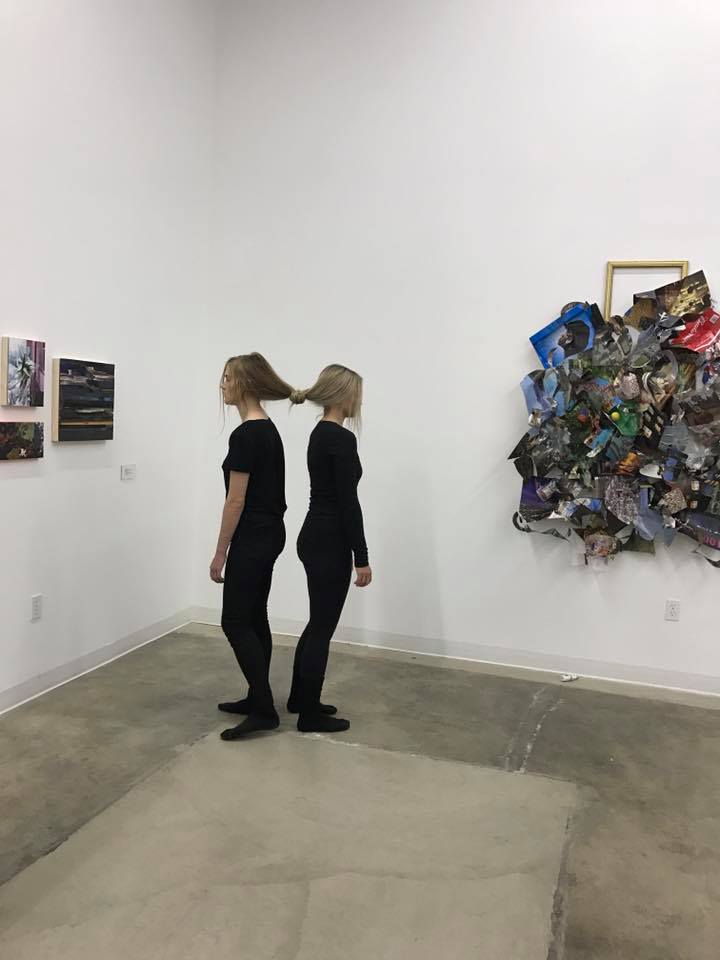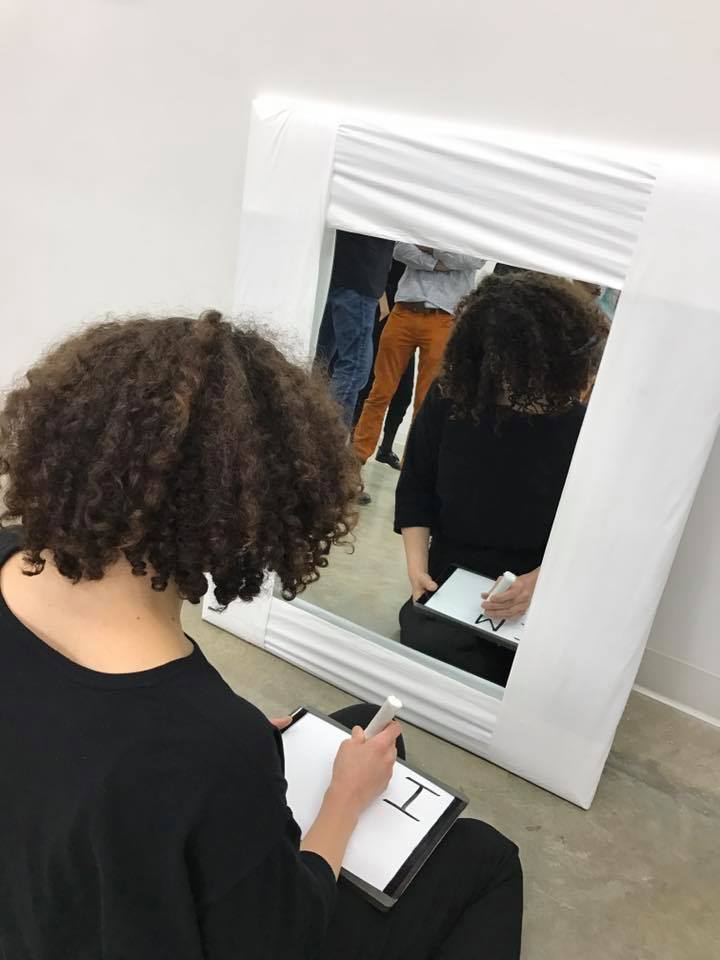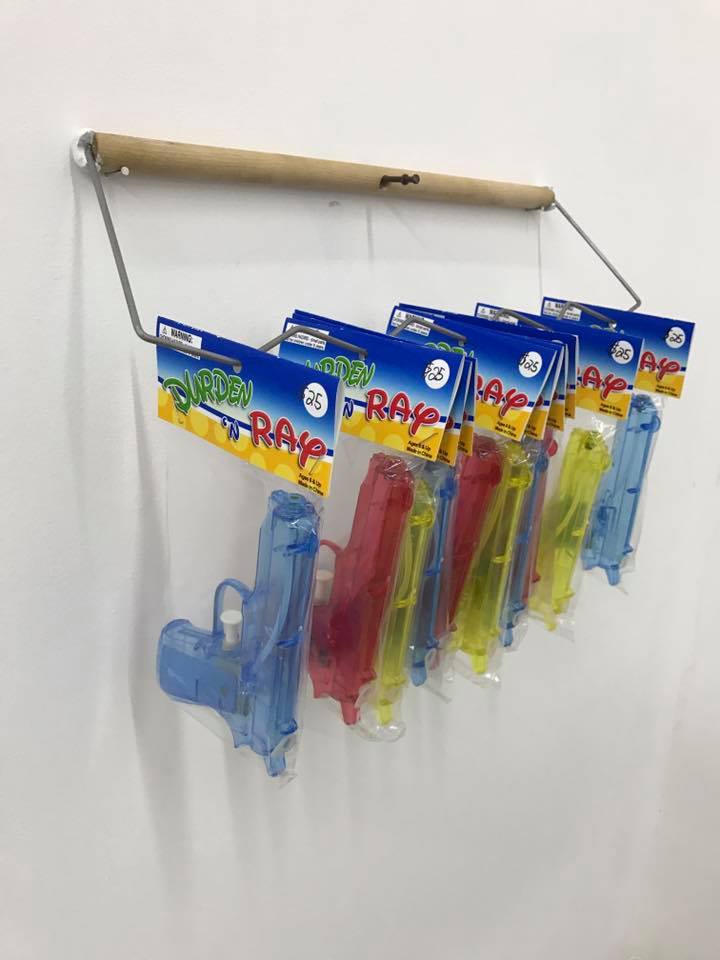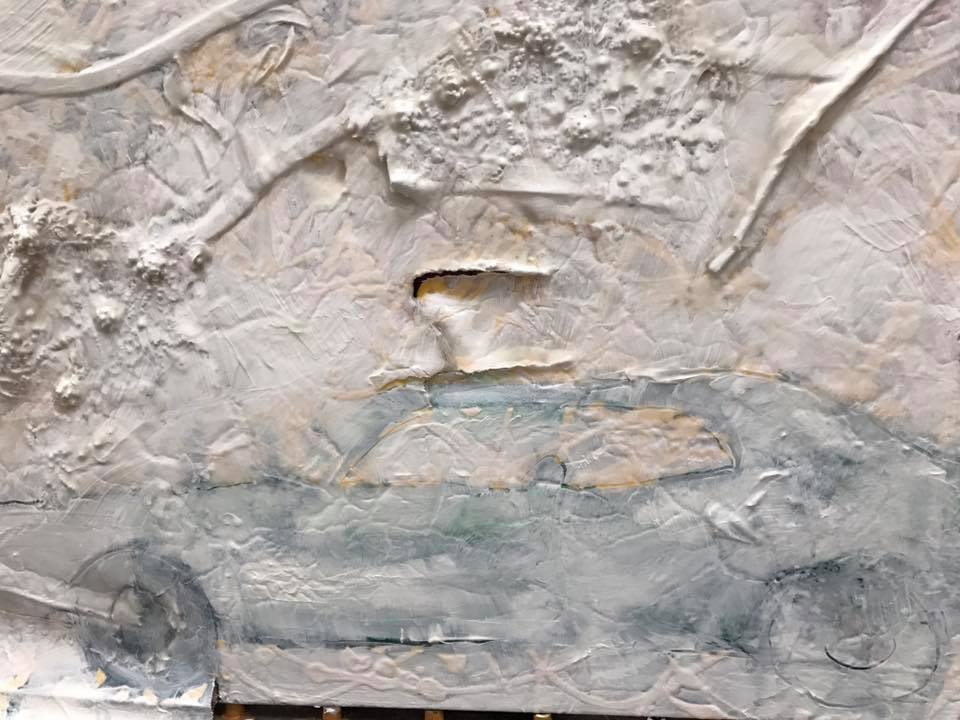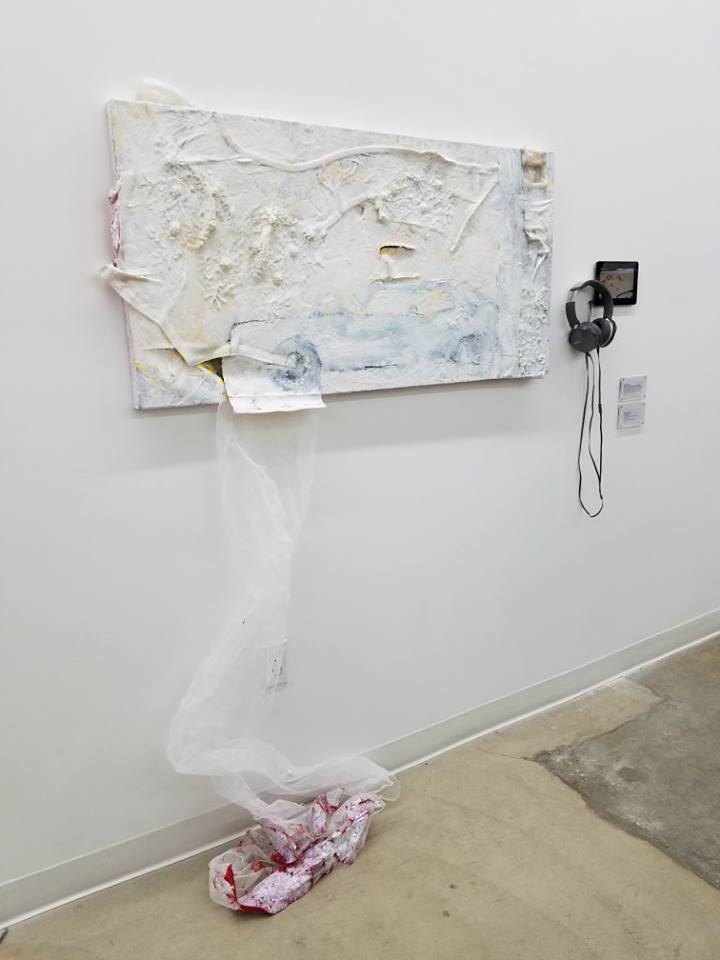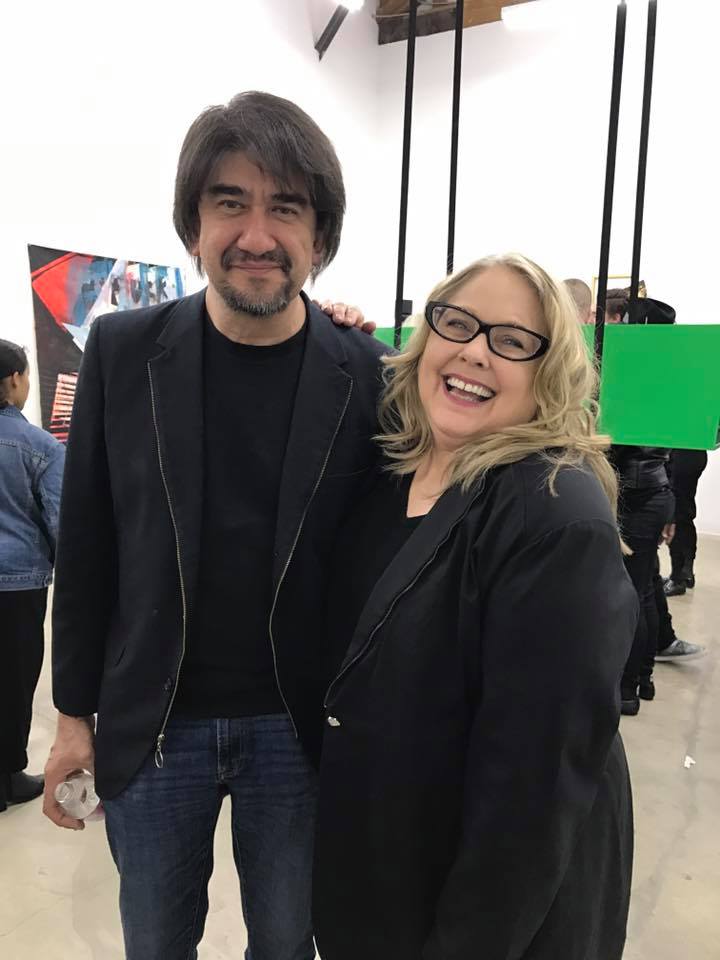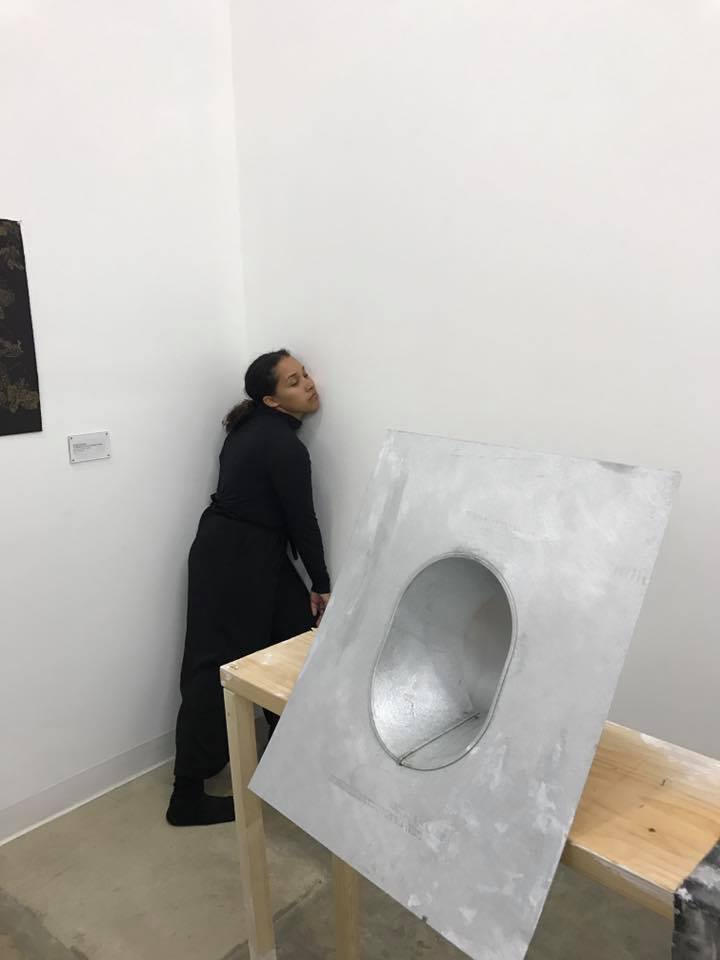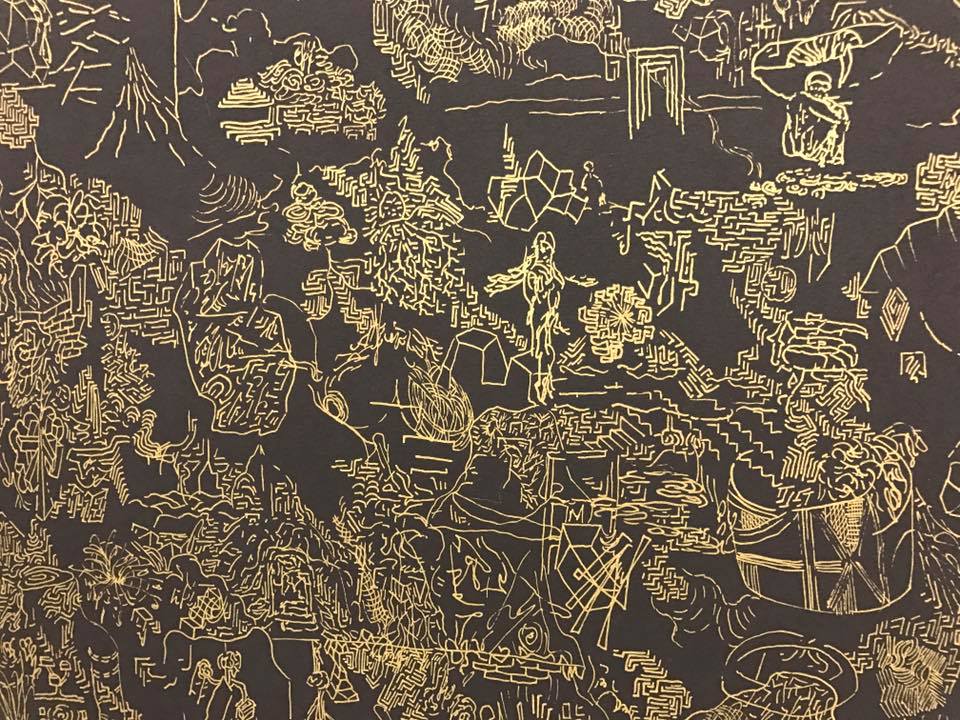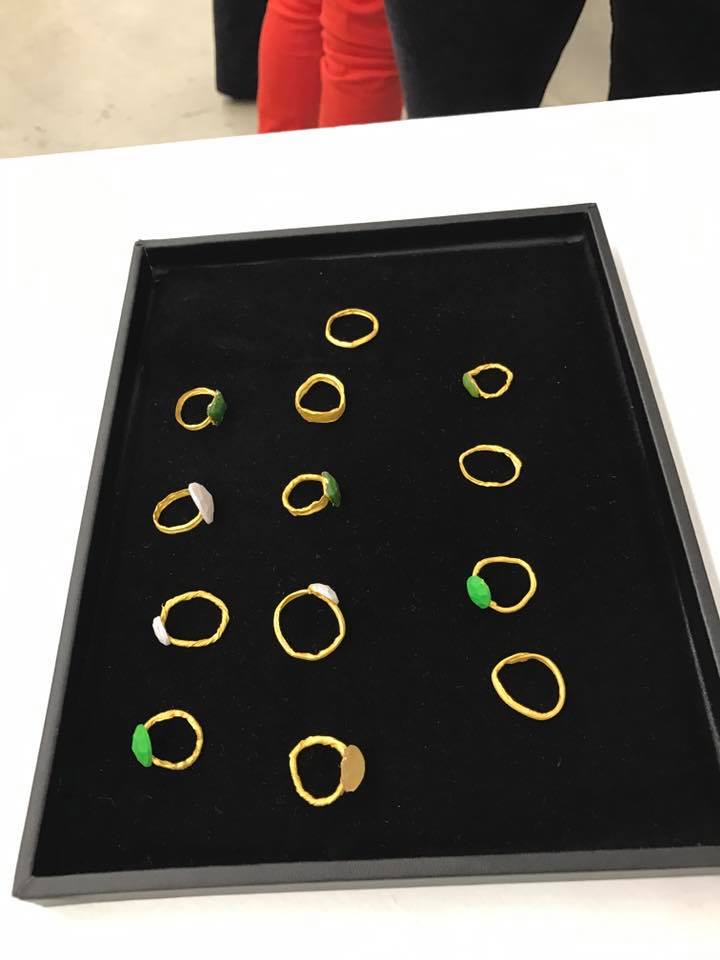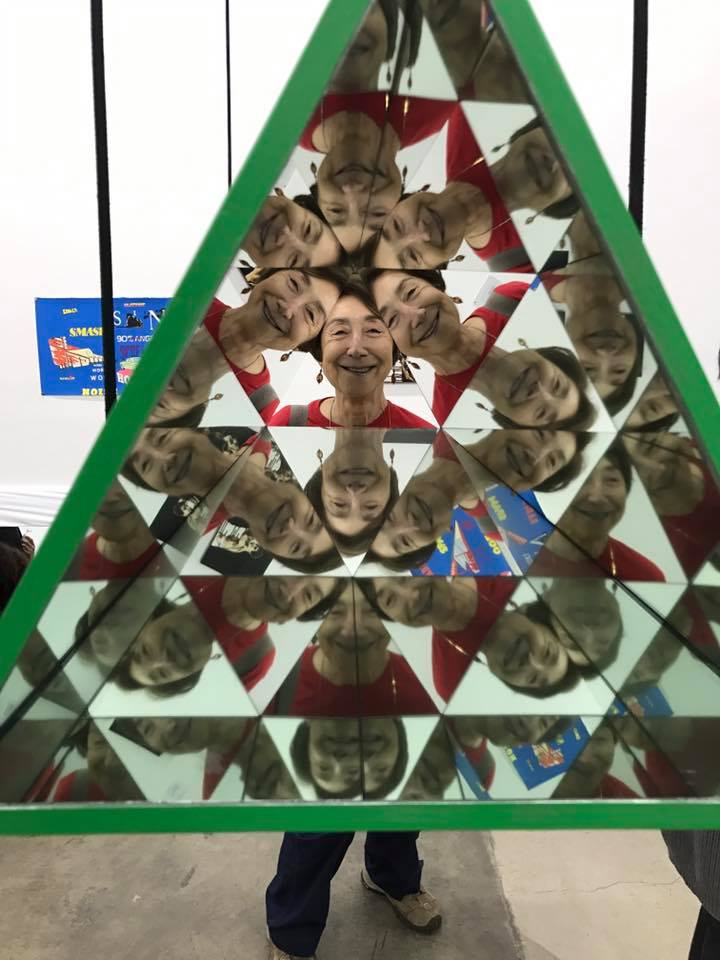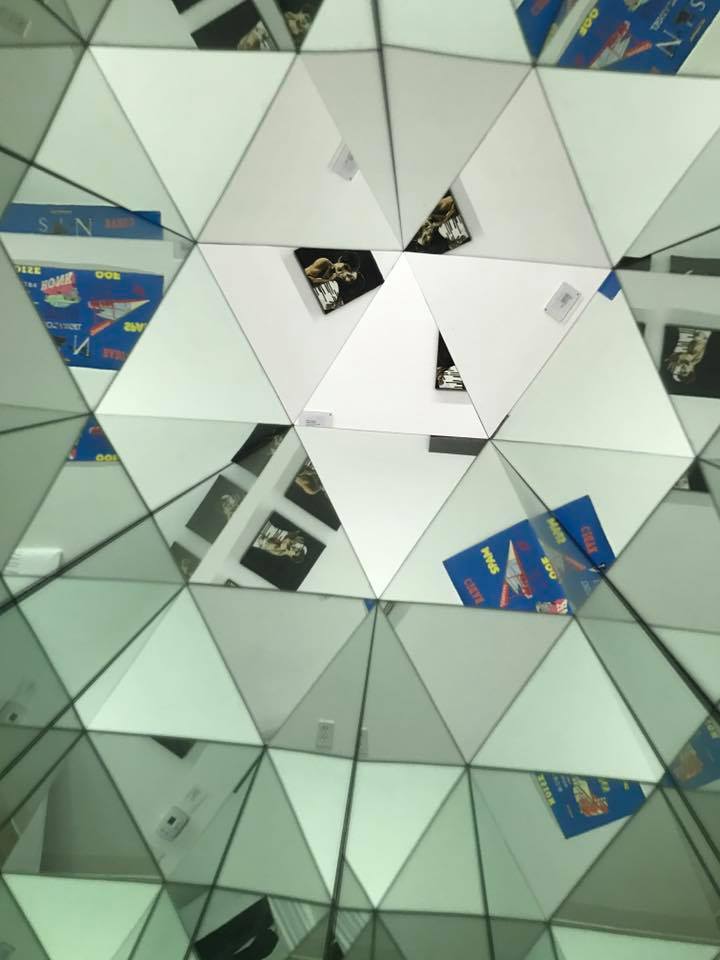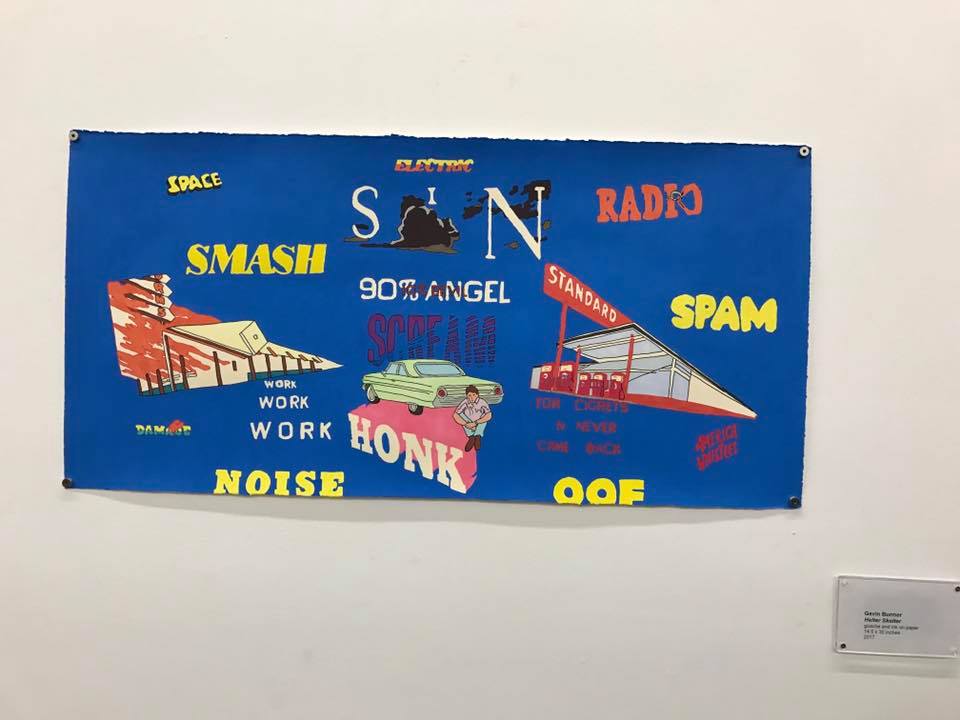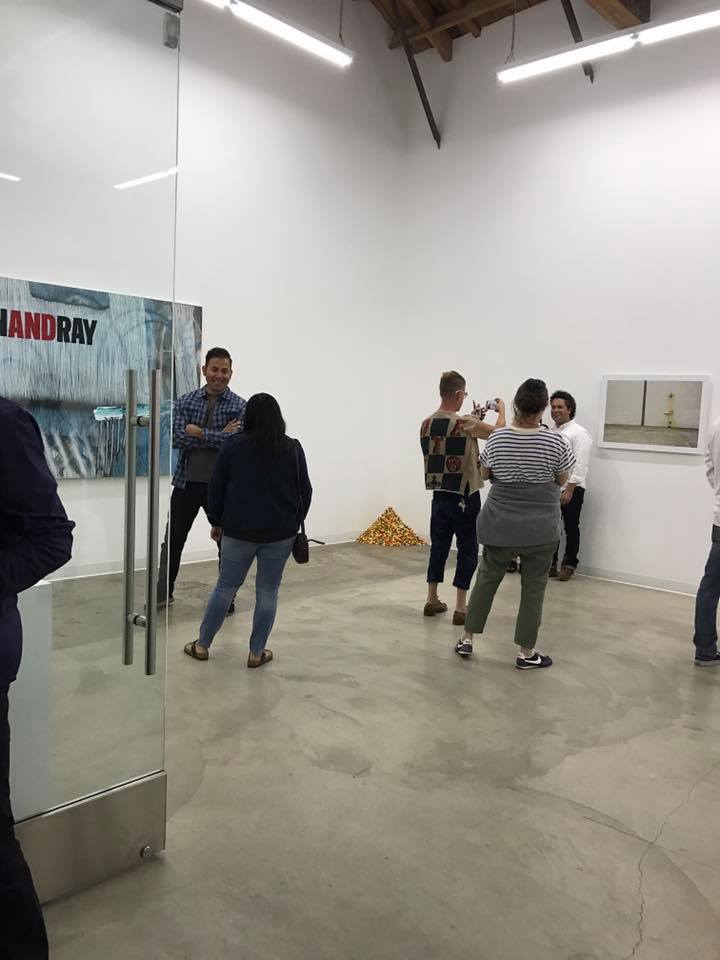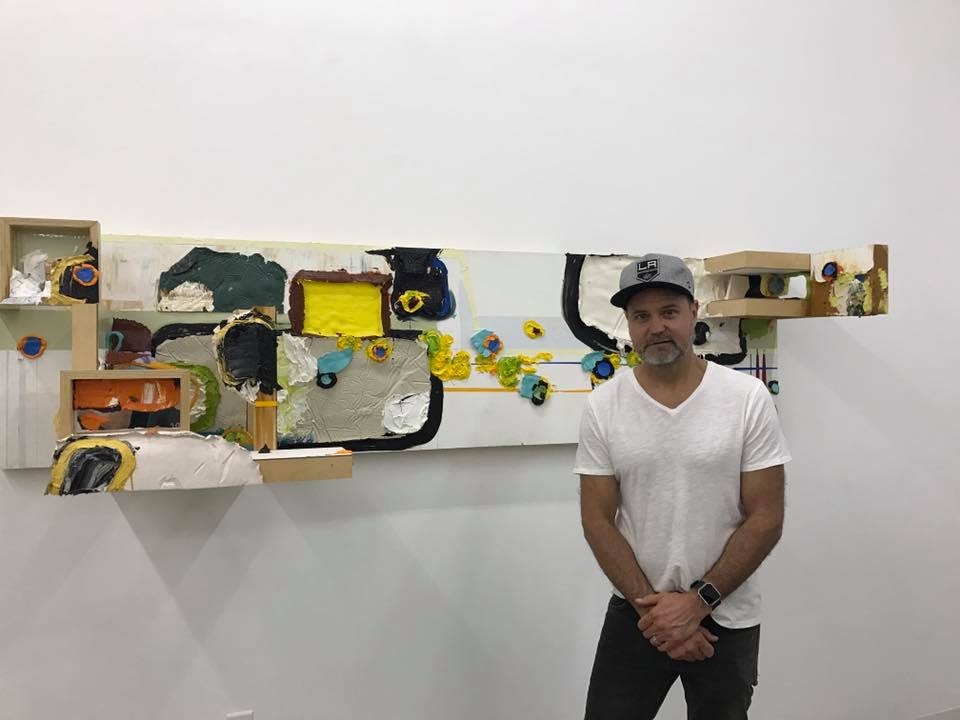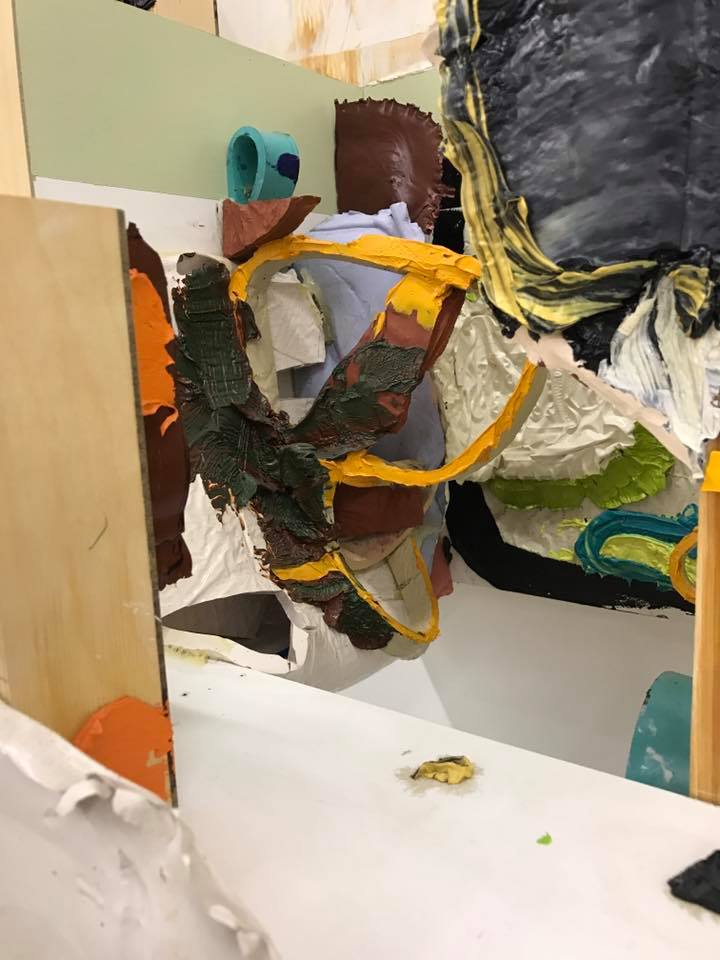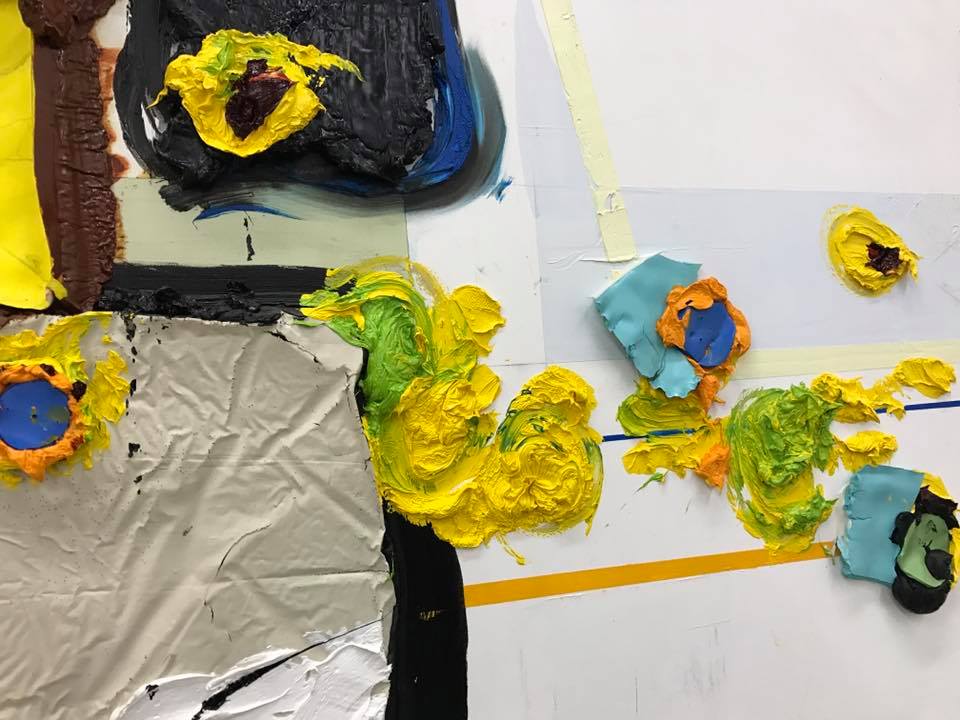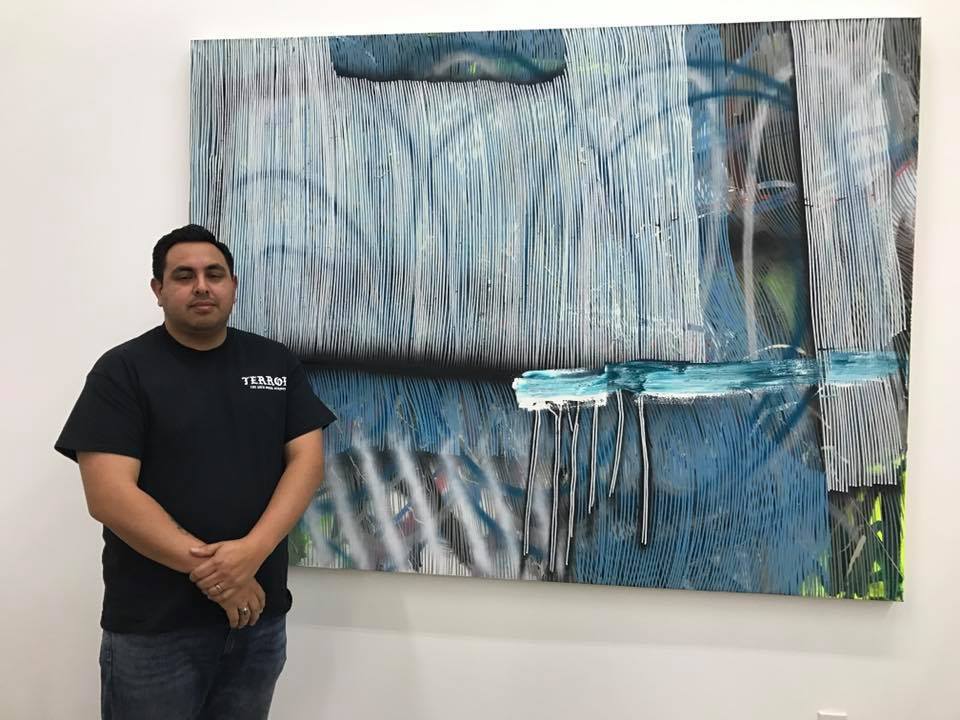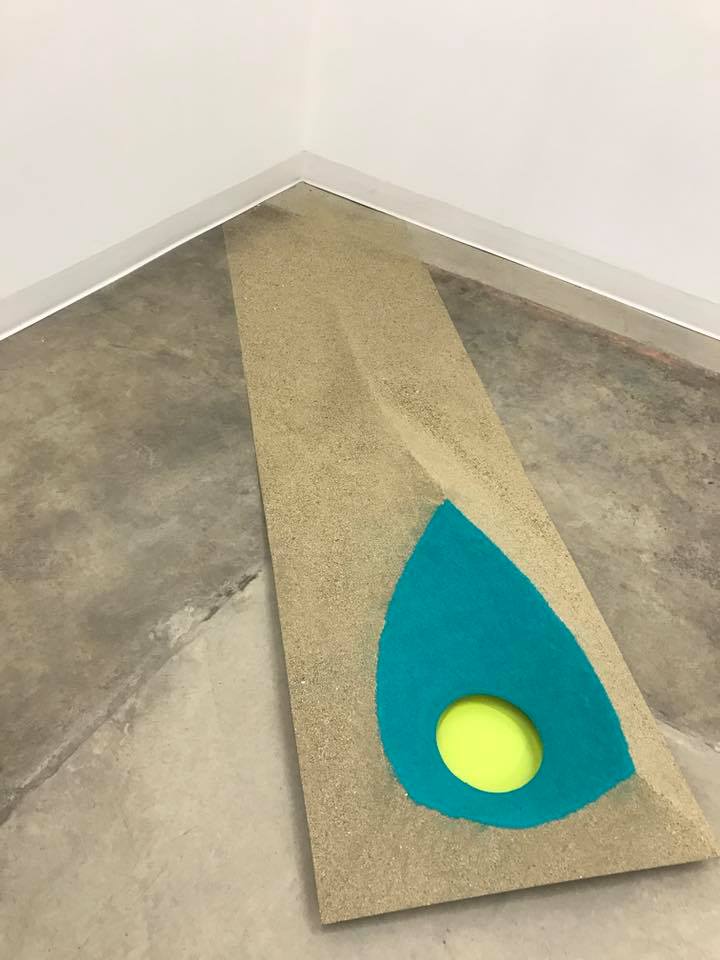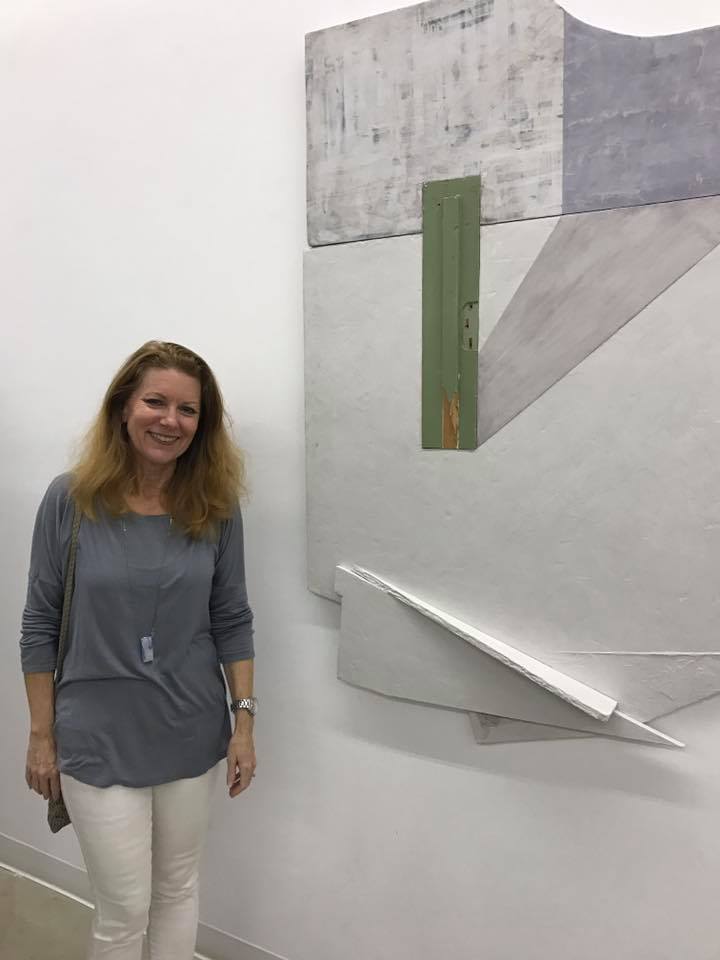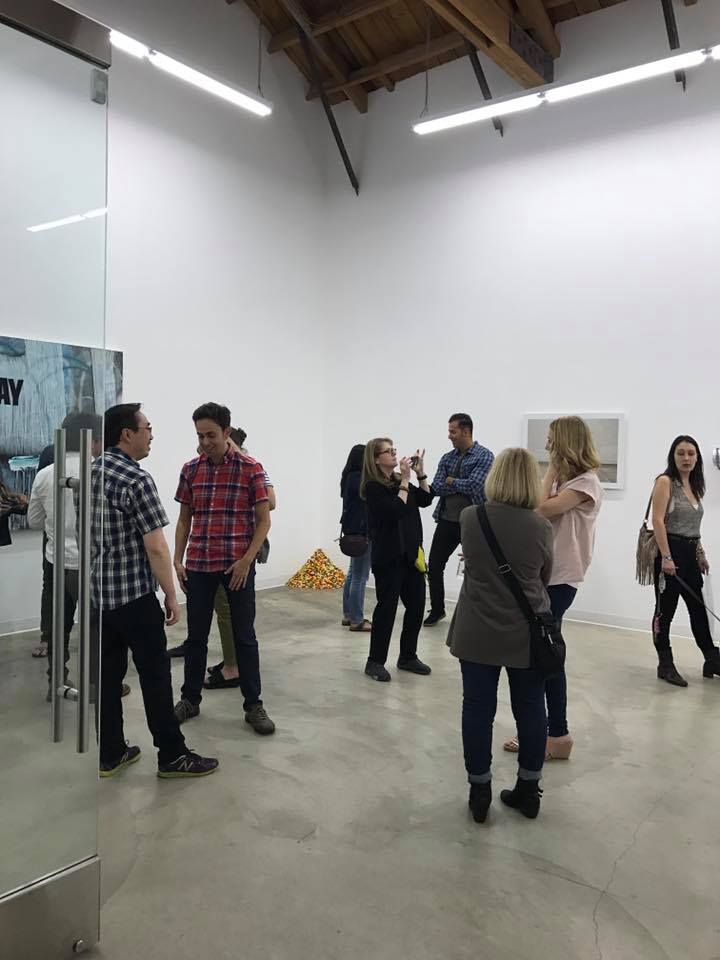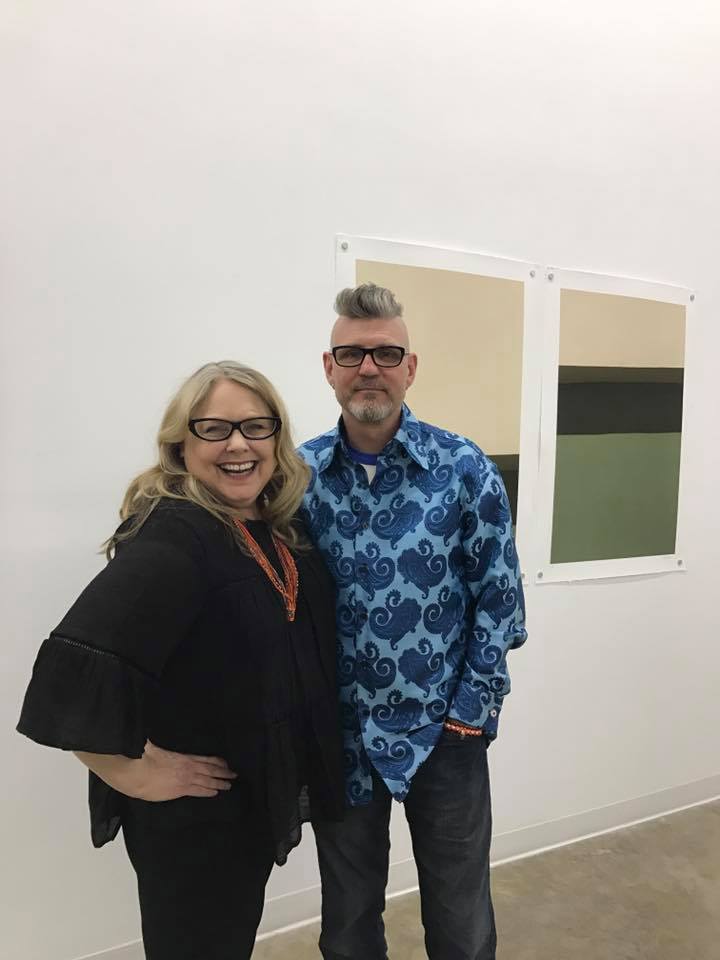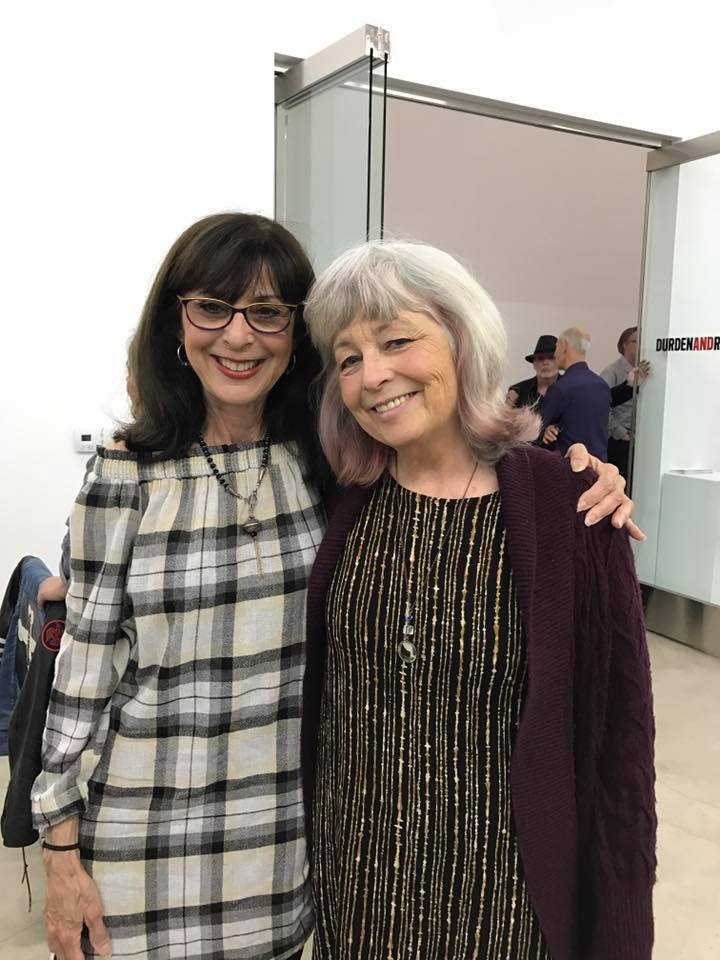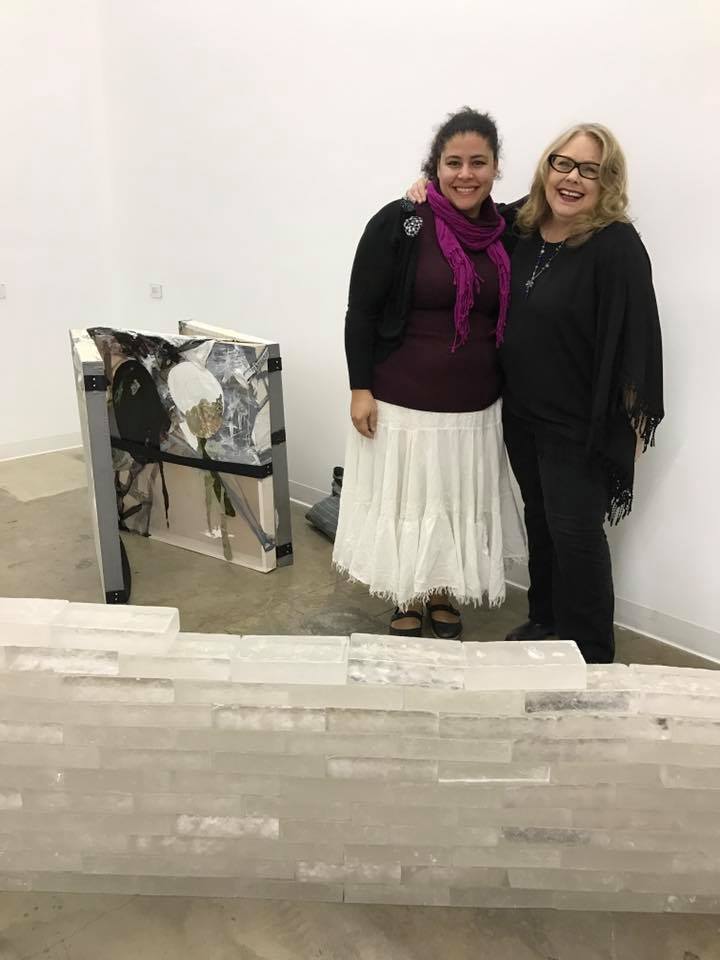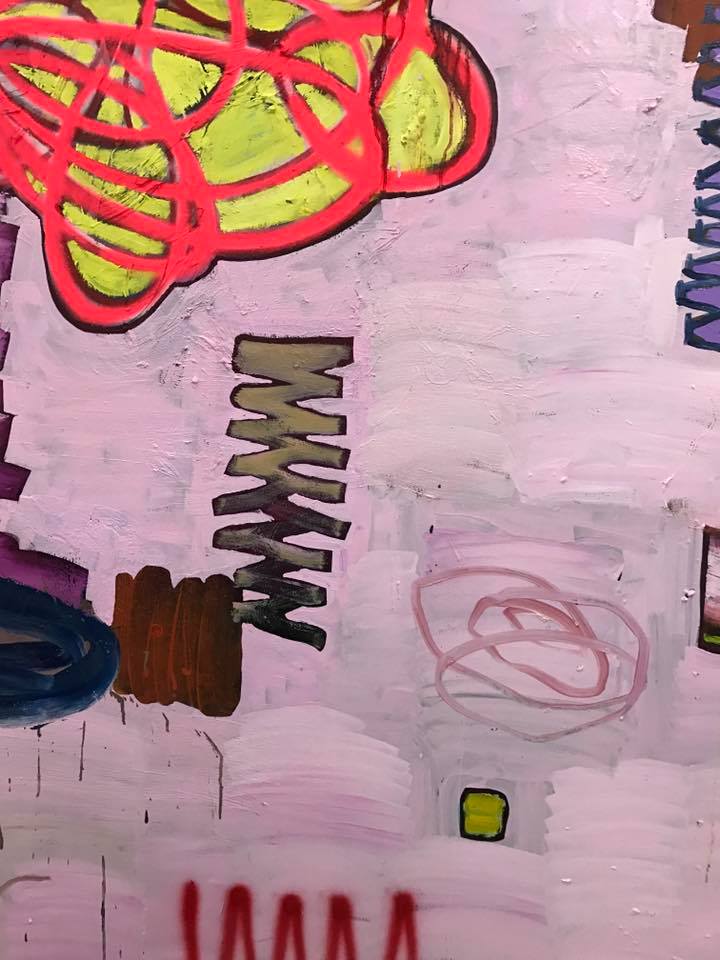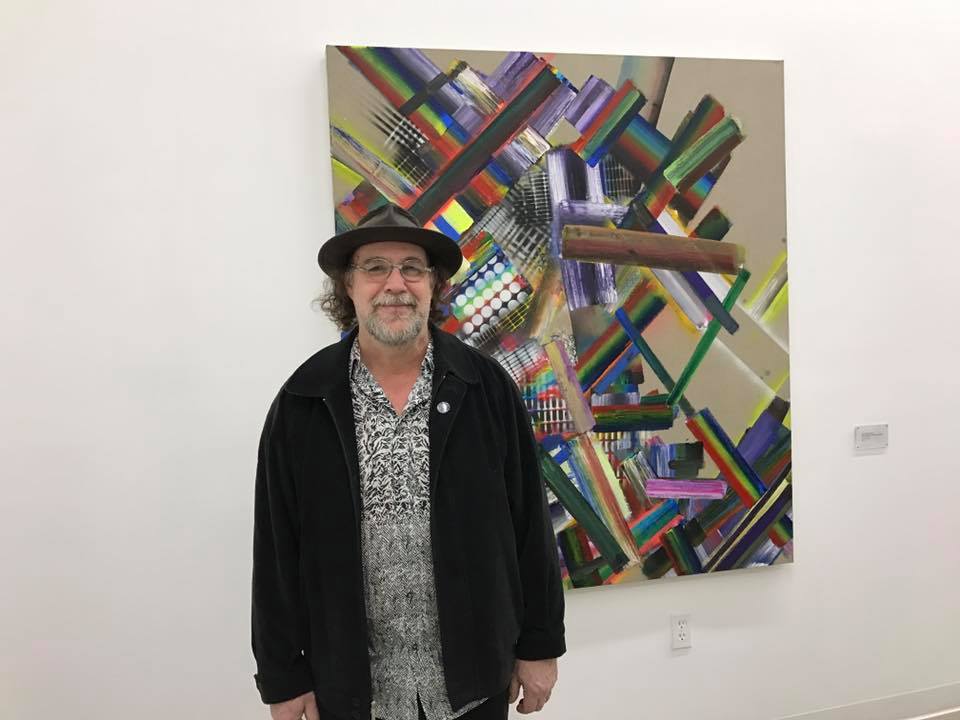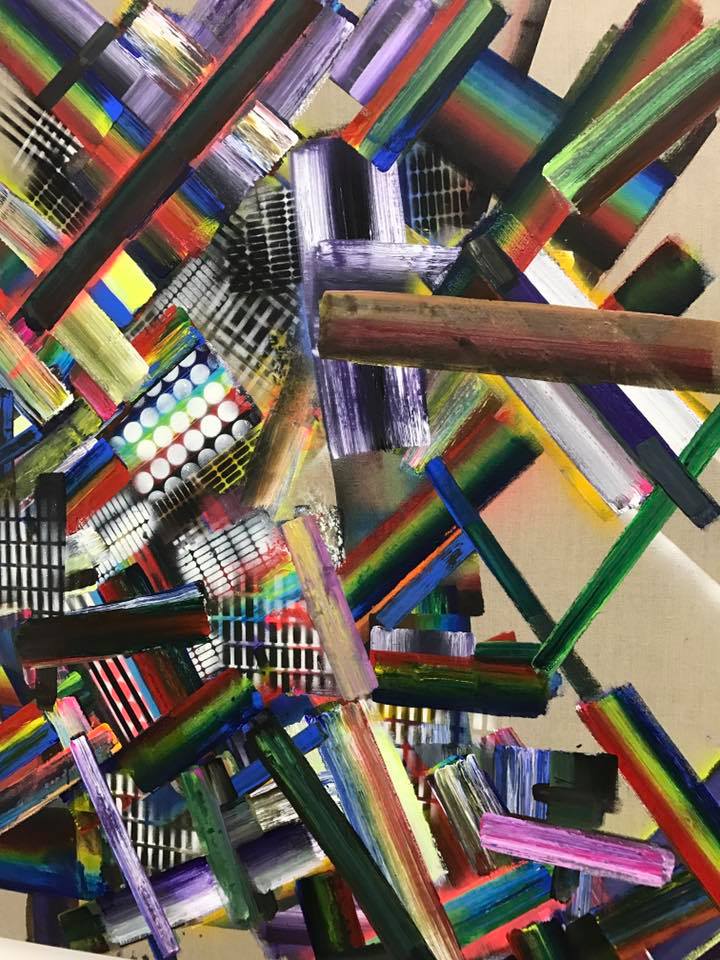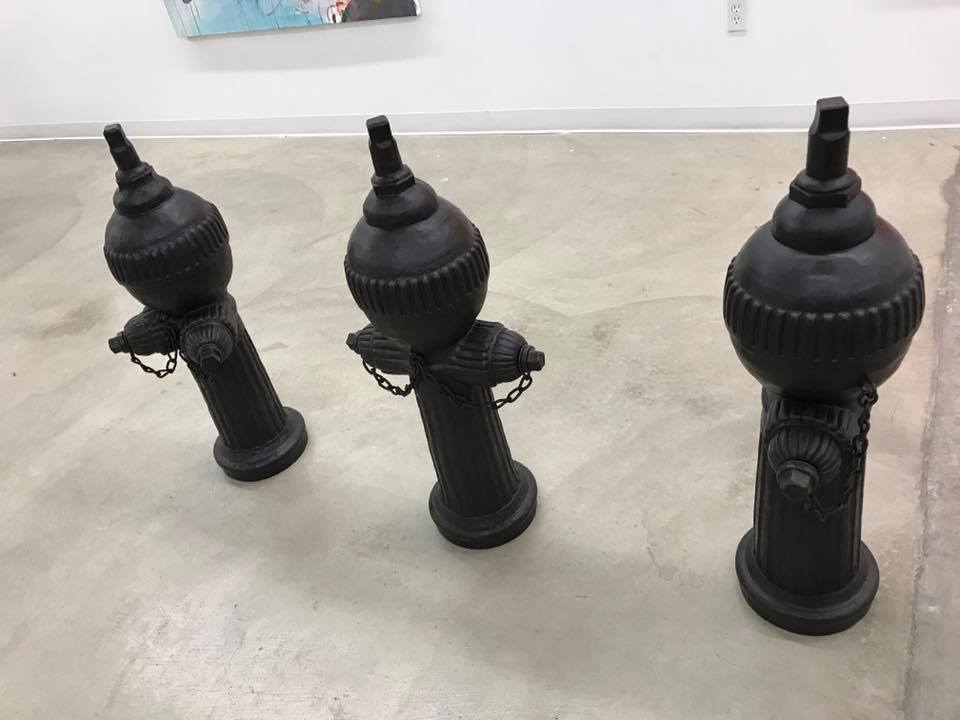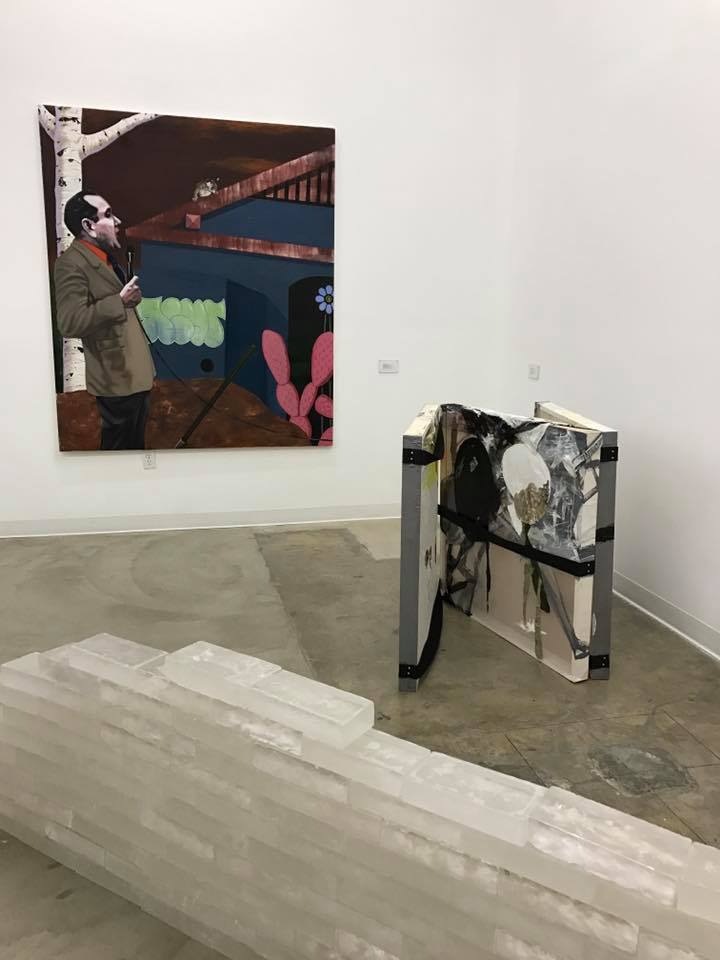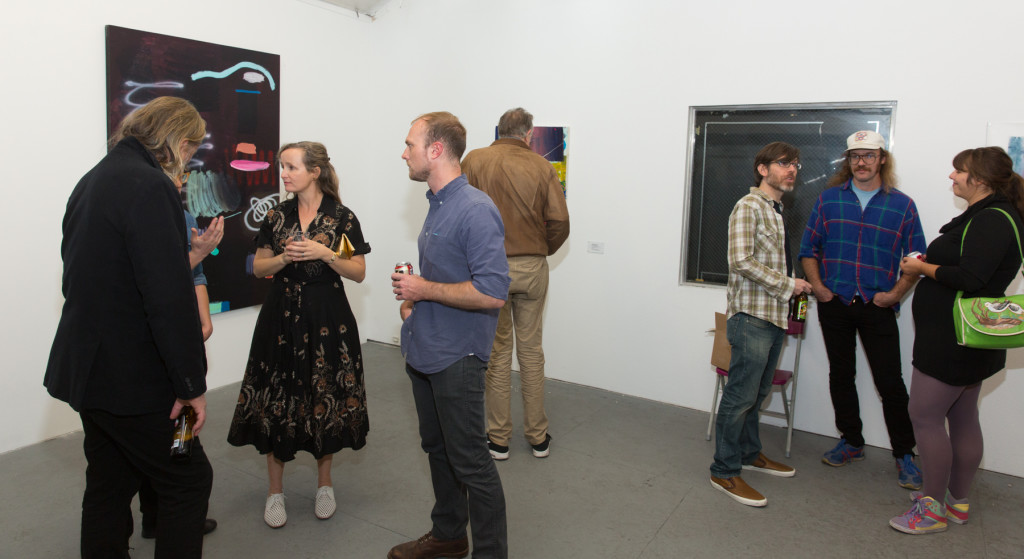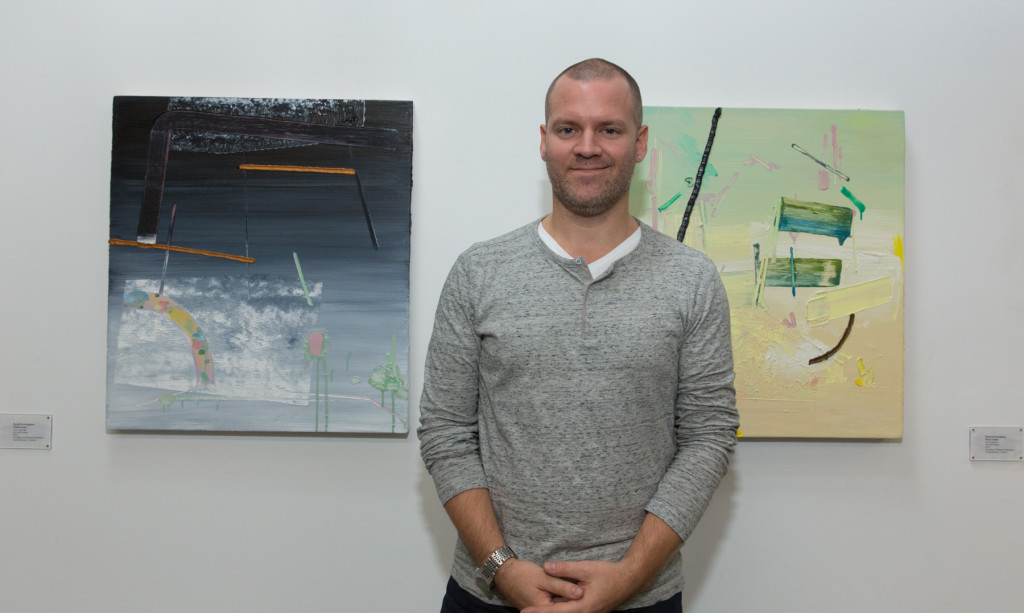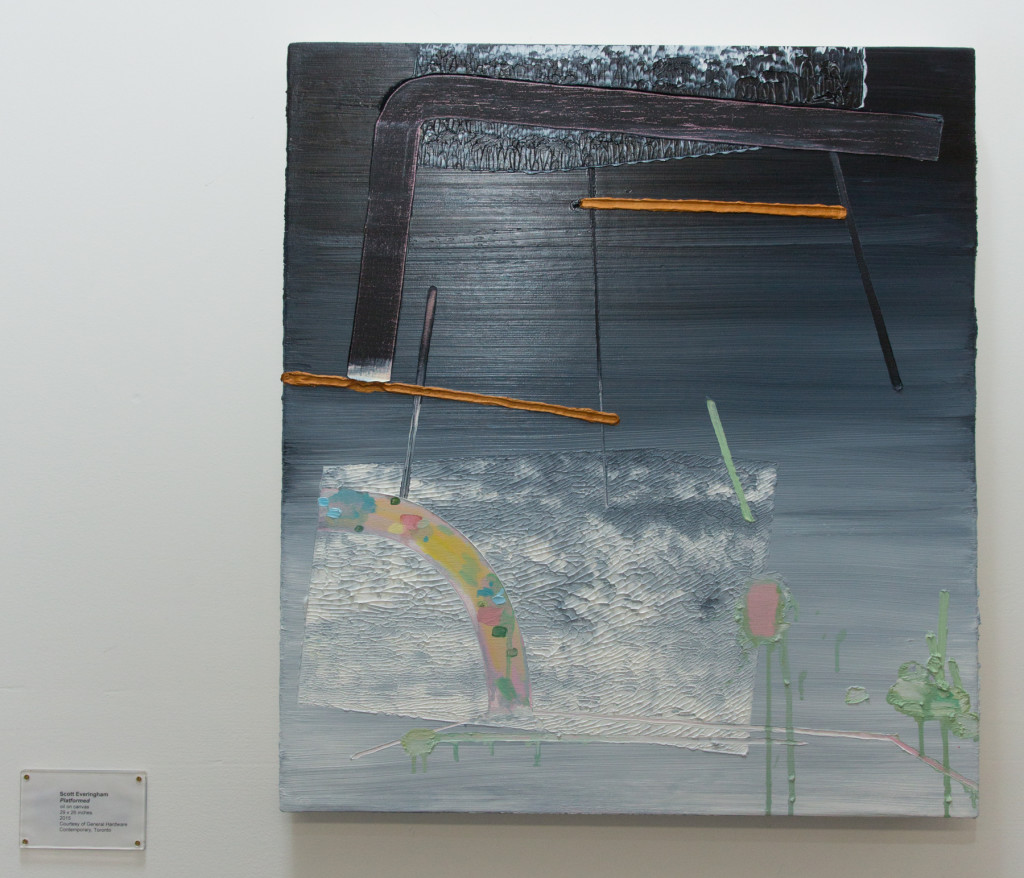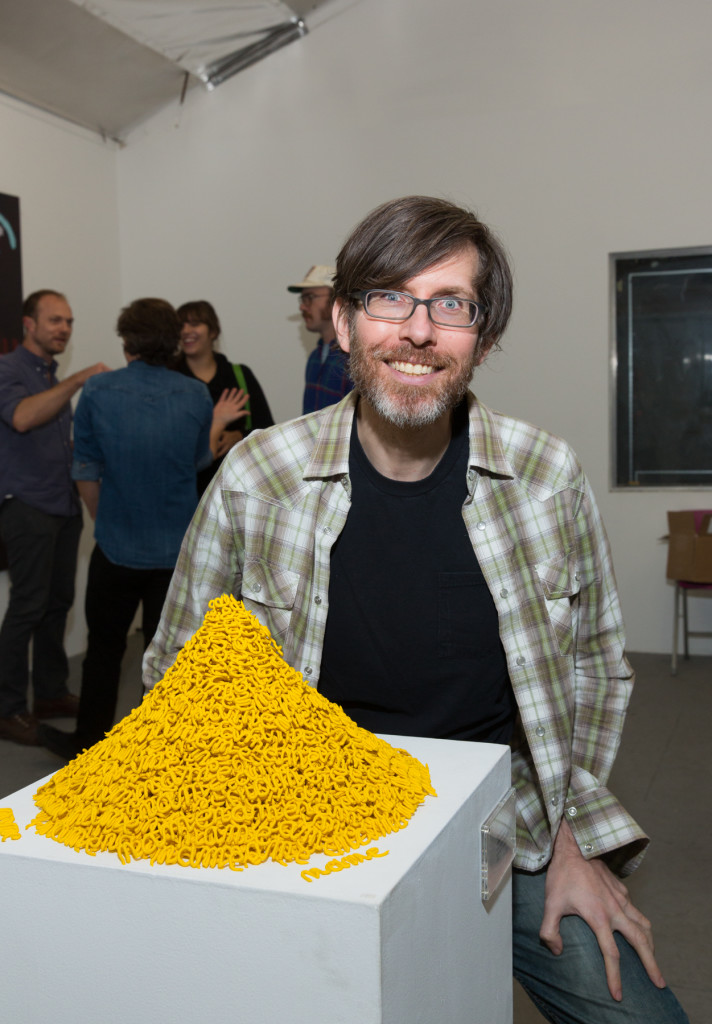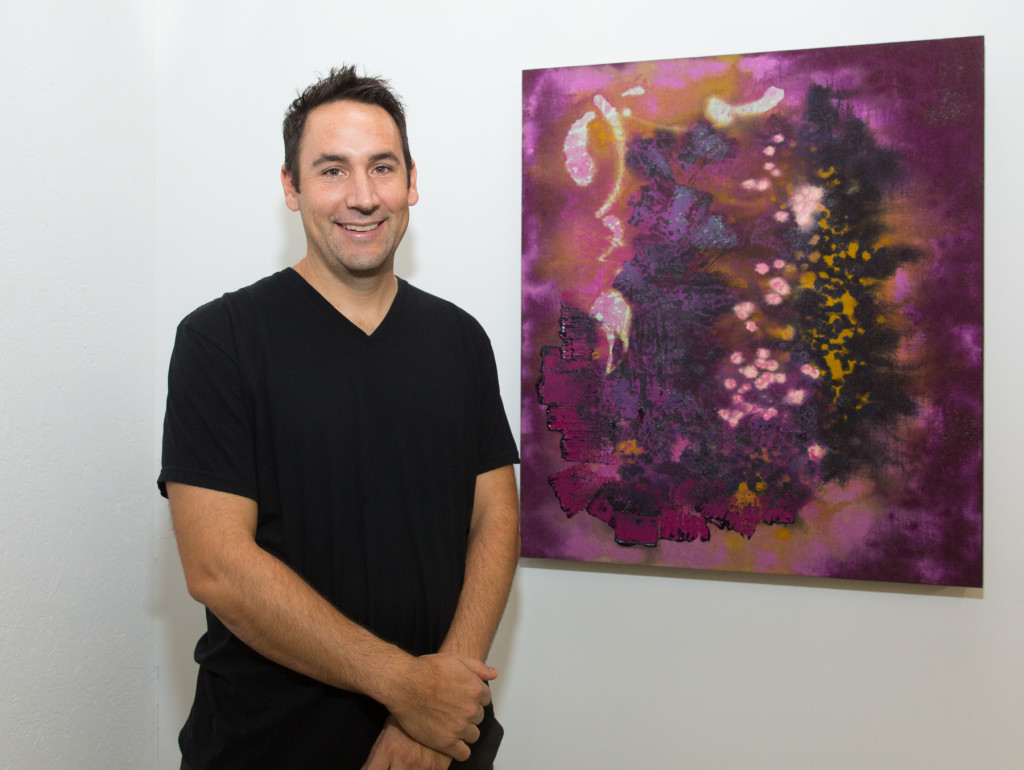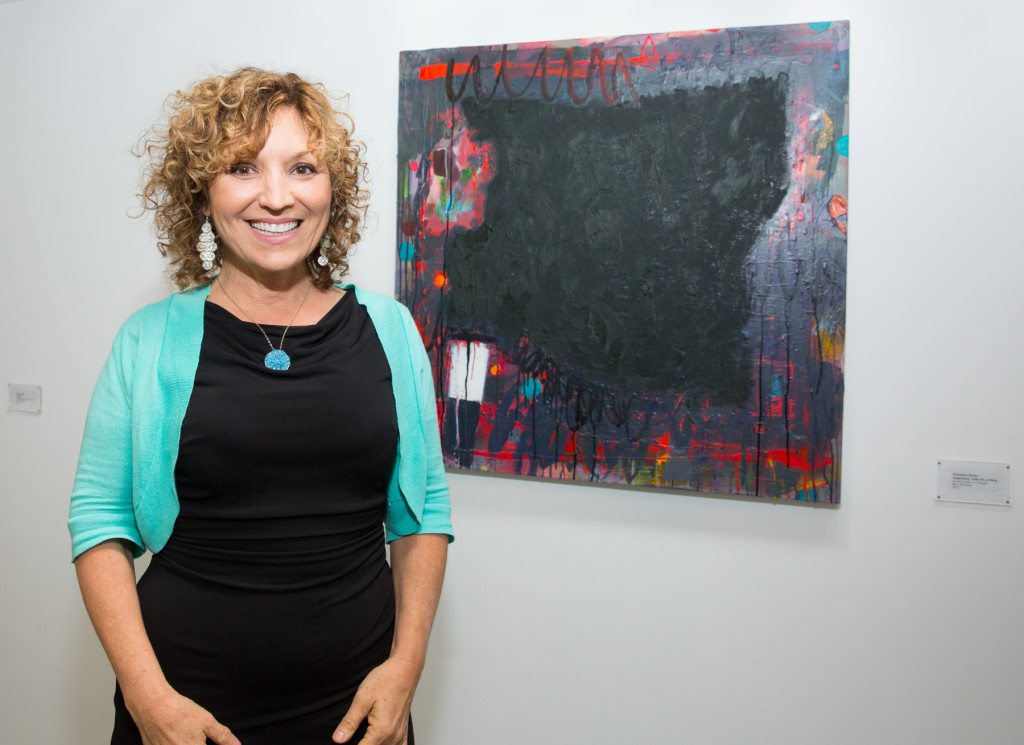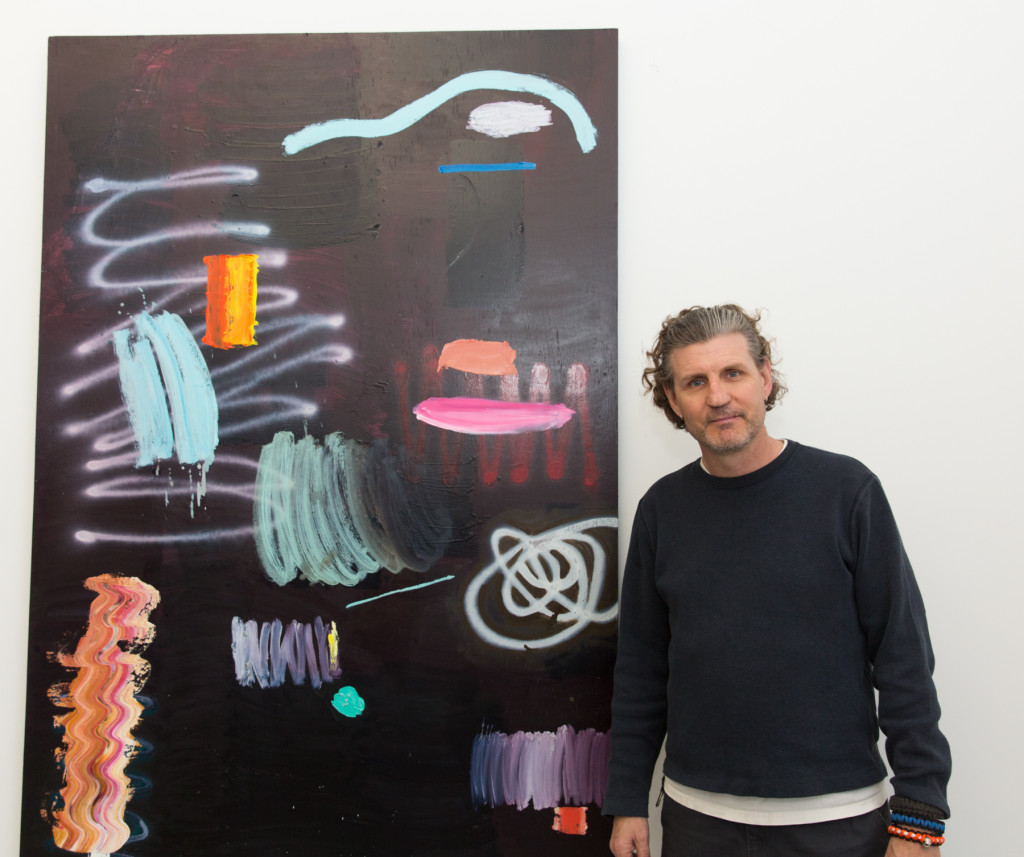Stephen Wright’s post-modern novel Going Native is a wild ride of literary fiction fused with pop culture. When an art exhibition is based around the book, and includes performance pieces and cocktails made with absinthe, then art lovers can expect a wild ride when it comes to the exhibition, too.
Durden and Ray’s delightful and provocative “Book Club: Going Native” is indeed wild – wildly inventive and conceptually clever. Curator Steven Wolkoff assembled a cadre of visual artists, a mixologist, hair stylists, dancers, and a choreographer to create an opening that fused art with performance plus an excerpted book reading.
While I’d only read a few chapters of the novel when the opening rolled around, it did not dim my pleasure in the experiential evening, which included the work of: Ania Catherine – choreographer, Ben Jackel – visual artist, Constance Mallinson – visual artist, Dani Dodge – visual artist, Dave Bondi – toy designer, David Leapman – visual artist, Kate Kelton – actress/artist, Gavin Bunner – visual artist, Jayna Zweiman – architect and co-founder of the Pussyhat Project, Jenny Hager – visual artist, Jon Flack – visual artist, Kio Griffith – visual artist, Liza Ryan – visual artist, Michael Webster – composer, Robin Jackson – best bartender/mixologist in LA (per LA Weekly), Steven Wolkoff – visual artist, Tom Dunn – visual artist, Traci Sakosits – Creative Director of Vidal Sassoon, North America, and Matthew Kazarian – Vidal Sassoon.
Dancers with their hair knotted to each other spun in a circle. Mixologist Robin Jackson poured sapphire, saline solution, absinthe, and oleosaccharum into cups and candy-colored water pistols for guests to shoot into their and other’s throats. The guns themselves were crafted by toy designer David Bondi, whose design, packaged and labeled as “Durden n’ Ray” also hung from a display rack on a wall.
Artist Dani Dodge offered up a compelling, layered painting “Previously Unthinkable Patterns.”
The painting, a mixed-media fusion of paint, duct tape, party favors, a piece of a wedding dress and the ashes of papers that contained burned fears dripped off the canvas literally with a 72″ tulle train puddling on the ground. The ghostly shape of the car that figures large in the novel emerges from the layers like a ship through thick fog, the canvas begs to be touched, but one doesn’t touch; still the almost physiological impression of being touched by the artwork persists.
Above, artists Dani Dodge and Kio Griffith.
Kio Griffith’s “Whichever Wolf You Feed,” a mixed media piece of wood, sheet metal, paint, sandpaper, and a ventilation duct, oozes mystery; the mood abetted by a dancer positioned against the corner wall next to the piece.
David Leapman’s “Salt hungry butterflies,” gold ink on black paper, has an elegaic feel that evokes calligraphy and Japanese woodblock prints. The artist contributed three similar works in all to the exhibition. Jenny Hager’s abstract “Bedlamite,” acrylic and marker on canvas, is bold and heated; Tom Dunn’s detailed, fascinating “Mesopotamia Drawing Series” functions as a kind of adjunct to the book’s chapters which are themselves a series of connected yet separate stories.
Curator Wolkoff created a series of “wedding rings” crafted of acrylic paint without support, they are as warped as the book’s belief system. The spacey stop-motion video of Traci Sakosits and Matthew Kazarian, “Basic Space,” compels repeated viewing, as does Dodge’s second piece in the show, the haunting “Evidence,” a video shown wall mounted on a mini-iPad.
All eyes were turned to Jayna Zweiman’s “It considered other facts, other views,” a dark green kaleidoscope-like sculpture which guests peered through and took IG-worthy semi-selfies through.
Constructed with mirror, plywood, and oil-based paint, the work was fabricated by Paul Guillemette and suspended from the gallery’s ceiling. The architect and co-founder of the Pussyhat Project has created a wonderful, changing fractured image that reflects both the quality of the book and a reader’s perception of it. It’s a fun house mirror take on art, life, and novel. The work’s green exterior represents the color of the stolen car driven by the novel’s protagonist.
While seeing the exhibition without the dancers, drink, and electronic soundtrack hum is a different experience than the opening night, it is a worthy one. The art stands alone, and one could know nothing of the book and have heard nothing of the opening’s vastly entertaining art circus and still enjoy it.
Above, a pop art distillation of the book, “Helter Skelter” by Gavin Bunner, goache and ink on paper.
Like many of Durden and Ray’s shows, this one is edgy and thought-provoking; the gallery and the art collective are building a reputation as a must-see in the crowded field of LA art.
- Genie Davis; Photos: Genie Davis


